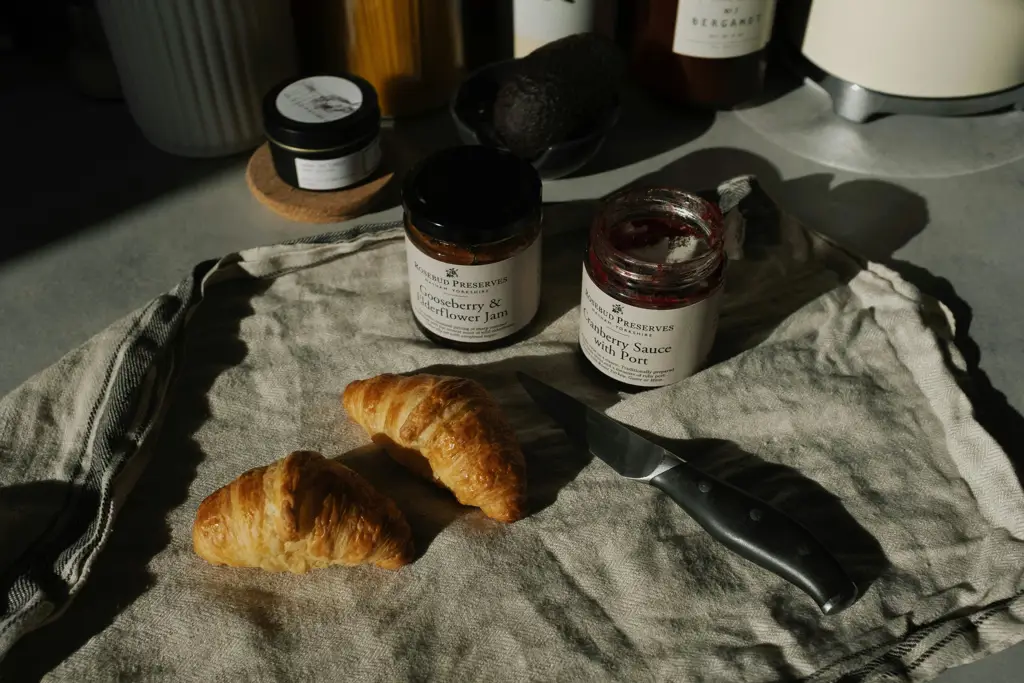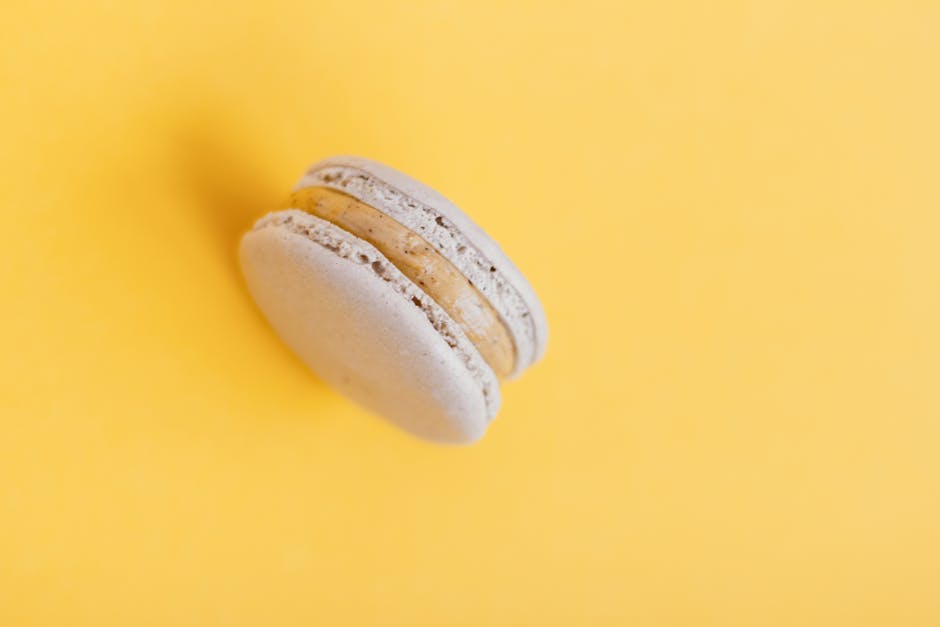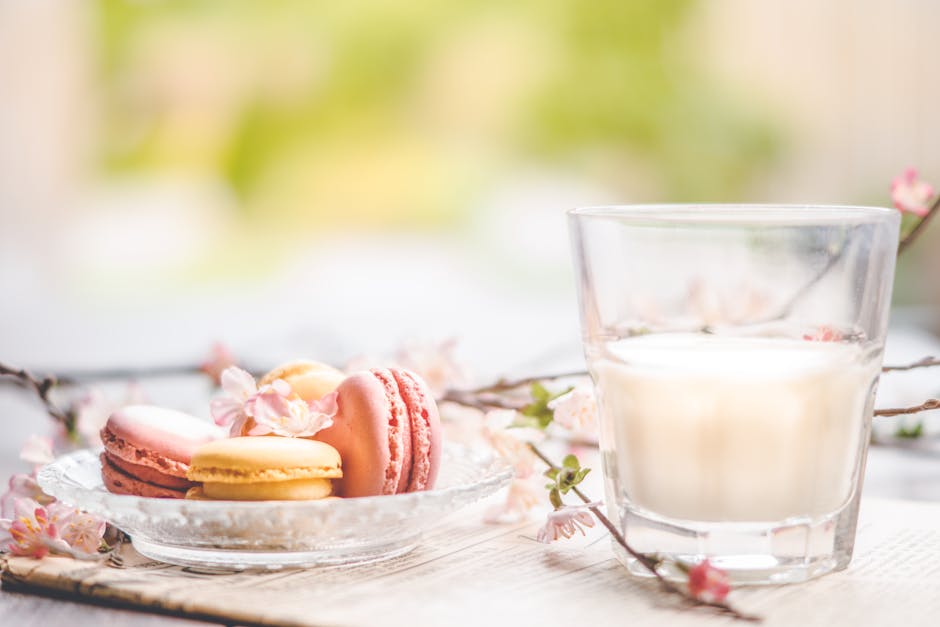Prepare your palates for a journey into the heart of French culinary excellence with the Authentic French Beurre Blanc sauce. This emulsified butter sauce, far from being a simple culinary technique, boasts a rich history and cultural significance that elevates it beyond mere accompaniment. Its creamy texture and complex flavor profile, a testament to French culinary precision, have cemented its place as a staple in classic French cuisine, gracing countless dishes from delicate fish fillets to robust roasted meats.
While the precise origins remain somewhat shrouded in culinary legend, the Beurre Blanc’s emergence is generally attributed to the Loire Valley region of France, sometime in the mid-20th century. Unlike many classic sauces with centuries-old roots, its relatively recent creation highlights the ongoing evolution of French gastronomy. Some culinary historians credit the renowned chef Henri Charpentier with its popularization, although the exact inventor remains debated among food scholars. Regardless of its precise beginnings, its rapid ascension within the culinary world speaks volumes about its immediate appeal and versatility.
The sauce’s name itself, translating literally to white butter, perfectly encapsulates its primary ingredient: high-quality butter. The creation of a successful Beurre Blanc, however, is far from straightforward. It demands meticulous technique and patience, relying on a delicate emulsion of butter, shallots, white wine vinegar, and often a touch of herbs. The process requires slowly whisking melted butter into a reduction of shallots and vinegar, a technique demanding precision and a steady hand to avoid breaking the emulsion. Failure to achieve the desired creamy consistency is a common pitfall, even for experienced chefs – underlining the sauce’s technical finesse.
Beyond its technical complexity, the Beurre Blanc holds significant cultural weight within French cuisine. It exemplifies the French emphasis on terroir, the unique characteristics imparted by a region’s environment. The choice of butter, vinegar, and even the shallots can subtly alter the final flavor profile, reflecting the nuances of a specific region. Furthermore, its presence on restaurant menus often signals a dedication to classic techniques and high-quality ingredients, serving as a marker of culinary expertise. While precise statistics on its prevalence are difficult to obtain, its ubiquitous presence in high-end French restaurants and its inclusion in countless cookbooks underscores its lasting influence and enduring appeal within French culinary culture. It is a sauce that speaks to both the artistry and tradition of French cooking.
Ingredients and Measurements
Creating an authentic French Beurre Blanc sauce hinges on the quality and precision of your ingredients. Using the freshest, highest-quality ingredients will dramatically elevate the flavor profile of your final sauce. Don’t skimp on the butter; it’s the star of the show! Similarly, the vinegar should be of good quality and bright.
Butter: You’ll need 1 cup (2 sticks or 227 grams) of unsalted butter, cold and cut into 1/2-inch cubes. It’s crucial that the butter is cold. Room temperature butter will not emulsify properly, leading to a broken sauce. If your butter is too soft, chill it in the refrigerator for at least 30 minutes before proceeding. Using unsalted butter allows you to control the saltiness of the final sauce, adding it to taste at the end.
Shallots: 2 large shallots, finely minced. Avoid using onions as their stronger flavor will overpower the delicate nature of the beurre blanc. Shallots provide a subtle sweetness and sharpness that complements the richness of the butter. Mincing them finely ensures they cook evenly and melt seamlessly into the sauce without leaving any noticeable pieces.
White Wine Vinegar: 1/4 cup (60ml) of high-quality white wine vinegar. Choose a vinegar with a bright, slightly acidic flavor such as a good quality white wine vinegar or even a dry sherry vinegar for a more complex outcome. Avoid using overly strong or flavored vinegars, as they can dominate the flavor profile of the sauce.
Dry White Wine: 1/2 cup (120ml) of dry white wine, such as Sauvignon Blanc or Chardonnay. The wine should be dry and of good quality, as its flavor will be noticeable in the finished sauce. Avoid using sweet or heavily oaked wines. A crisp, acidic wine will balance the richness of the butter and enhance the overall flavor complexity.
Heavy Cream (Optional): 1 tablespoon of heavy cream. This is optional but adding a tablespoon of heavy cream can help to create an even smoother and richer sauce, particularly if you are using a particularly acidic vinegar. Add the cream only after the emulsion is complete and remove from heat immediately. Overheating will cause the sauce to curdle.
Seasoning: Salt and freshly ground white pepper to taste. White pepper is preferred as it doesn’t leave dark specks in the light-colored sauce. Seasoning should be added at the end, adjusting to your preference. Start with a small amount and taste before adding more.
Other additions (Optional): For extra flavor, consider adding a tablespoon of finely chopped fresh tarragon or chives just before serving. These herbs will add a touch of freshness and aromatic complexity to your sauce. Remember to add them at the very end to prevent them from wilting or losing their bright green colour.
Important Note: Accurate measurements are key to achieving a successful beurre blanc. Using a kitchen scale for measuring the butter and liquids will ensure consistency and optimal results. Remember to use only the freshest ingredients possible for the best tasting beurre blanc sauce.
Equipment List: Authentic French Beurre Blanc Sauce
Creating a truly authentic French Beurre Blanc requires precision and the right tools. While seemingly simple, the process is delicate, and the quality of your equipment directly impacts the final result. This list details the necessary equipment, with recommendations for optimal performance.
1. Saucepan: You’ll need a small to medium-sized saucepan, ideally with a heavy bottom and light-colored interior. A 1-quart (approximately 1-liter) saucepan is ideal. The heavy bottom ensures even heat distribution, preventing scorching and ensuring a smooth emulsion. A light-colored interior allows you to easily monitor the color and consistency of the sauce. Avoid using non-stick pans for this recipe, as the emulsion may not form as effectively.
2. Whisk: A whisk is crucial for emulsifying the butter into the reduction. A balloon whisk is strongly recommended due to its large surface area, which incorporates air and facilitates a smooth, creamy texture. A smaller whisk might struggle to handle the volume efficiently. Ensure your whisk is clean and dry before beginning; any water residue can disrupt the emulsion.
3. Small Bowl: A small bowl is necessary for preparing the shallots and vinegar reduction. A 6-8 inch diameter bowl is sufficient. The bowl should be heat-safe if you choose to warm the vinegar and shallot mixture gently before adding the butter, although this isn’t strictly necessary.
4. Measuring Cups and Spoons: Accurate measurements are vital for achieving the perfect balance of flavors. Use standard measuring cups and spoons for precise quantities of shallots, vinegar, and white wine. A digital kitchen scale can also be beneficial for measuring the butter accurately, ensuring a consistent outcome. We recommend measuring the butter in grams for the most precise results.
5. Rubber Spatula or Wooden Spoon (Optional): While a whisk is the primary tool for emulsification, a rubber spatula or wooden spoon can be helpful for scraping down the sides of the pan and ensuring all ingredients are incorporated. This is particularly useful towards the end of the process when the sauce is thickening.
6. Fine-Mesh Sieve (Optional): If you prefer a perfectly smooth sauce without any visible pieces of shallot, a fine-mesh sieve can be used to strain the finished beurre blanc before serving. This step is optional but recommended for a restaurant-quality finish.
7. Heat Source: A stovetop with a consistent heat source is essential. Avoid using high heat, as this can easily scorch the sauce. Medium-low heat is ideal for gentle simmering and controlled butter incorporation. A gas stove offers more precise temperature control than an electric stove, but both can be used successfully with careful attention.
8. Heat Resistant Gloves (Optional, but Recommended): Handling a hot saucepan is always a risk. Consider using heat-resistant gloves, especially if you are less experienced in the kitchen. Safety should always be the priority when working with hot liquids.
Preparation Phase: Mise en Place
The success of an authentic French Beurre Blanc sauce hinges heavily on meticulous preparation – what the French call mise en place. This crucial step ensures a smooth and efficient cooking process, preventing rushed decisions that can compromise the final product. Proper mise en place is the foundation of a flawless Beurre Blanc.
Begin by gathering all your ingredients and equipment. You’ll need: 1 shallot, finely minced (approximately 1 tablespoon); 2 tablespoons dry white wine (a crisp Sauvignon Blanc or Chablis works best); 1 cup (2 sticks) unsalted butter, cut into 1/2-inch cubes and very cold; 2 tablespoons white wine vinegar; 1 teaspoon Dijon mustard; Salt and freshly ground white pepper to taste. It’s also essential to have a small, heavy-bottomed saucepan, a whisk, and a heatproof bowl (for keeping the butter warm) ready.
Mincing the shallot is key. Avoid using a food processor, as this can release too much moisture and lead to a bitter sauce. Finely mincing by hand ensures a delicate texture and prevents overpowering the subtle flavor of the butter. Aim for a consistency where the shallot pieces are barely visible.
The quality of your butter is paramount. Use unsalted butter to control the salt level in your sauce. Ensure the butter is very cold; this is crucial for creating an emulsion that doesn’t break. If your butter is too soft, the sauce will likely curdle. Store the cubed butter in a bowl in the refrigerator until just before use. Having the butter pre-portioned and ready to go will streamline the sauce-making process.
Measuring your liquids accurately is also vital. Use a measuring cup or spoons to ensure precise quantities of white wine and vinegar. These liquids form the base of the emulsion, and any significant deviation can affect the final consistency and flavor. Use high-quality white wine vinegar; its acidity balances the richness of the butter. A lesser quality vinegar will detract from the overall taste.
Prepare your equipment strategically. Have your small saucepan readily available on a low heat. A heavy-bottomed saucepan is best for even heat distribution and prevents scorching. Your whisk should be clean and dry; any moisture will hinder emulsion formation. The heatproof bowl will keep your butter cubes at a consistent temperature preventing them from becoming too hard or too soft.
Finally, consider your timing. Having all your ingredients prepared and measured beforehand allows you to focus on the delicate process of emulsifying the butter. This prevents rushing and ensures a smoother, more consistent end product. The mise en place is not just about preparation; it’s about setting the stage for success.
Cooking Techniques: Emulsification Process
The heart of a truly authentic Beurre Blanc lies in its perfect emulsification. This delicate process involves combining seemingly incompatible ingredients – fat (butter) and water (wine, vinegar, or both) – into a stable, creamy emulsion. Understanding the principles behind emulsification is key to achieving a smooth, luxurious sauce that won’t separate.
We begin with a reduction of shallots in white wine vinegar (or verjus for a more tart result). For a classic Beurre Blanc, use approximately 2 tablespoons of finely minced shallots sautéed gently in 2 tablespoons of white wine vinegar until softened but not browned. This takes about 5-7 minutes over low heat. Avoid browning the shallots, as this will impart a bitter flavor to the final sauce.
Next, we gradually incorporate the cold butter. This is where the magic happens. The key is to add the butter slowly, one small piece at a time, while whisking vigorously and continuously. Start with approximately 1/2 cup (1 stick) of cold, unsalted butter, cut into small cubes. The cold temperature is crucial; it prevents the butter from melting too quickly and breaking the emulsion. Use a whisk with a good, sturdy handle for optimal control. Whisk in a circular motion, incorporating each cube of butter fully before adding the next.
The whisking technique is paramount. A consistent, energetic whisking action creates tiny droplets of fat that are then enveloped by the aqueous phase (the vinegar reduction). This prevents the fats from clumping together and separating from the liquid. If the sauce starts to separate, immediately reduce the heat and whisk more vigorously. Adding a teaspoon of warm water can also help to re-emulsify if necessary. This is a technique that requires practice and patience but the result is well worth the effort.
As you add the butter, the sauce will gradually thicken and become glossy. Once all the butter is incorporated, you’ll have a rich, creamy emulsion. The final volume should be approximately 1 1/2 cups. Do not overheat the sauce, as this will cause the butter to separate. Keep the heat low throughout the entire process. If the sauce is too thick, add a teaspoon or two of warm water to adjust the consistency.
Seasoning is the final touch. Taste the Beurre Blanc and season with freshly ground white pepper and a pinch of sea salt. Adjust the seasoning to your preference. A squeeze of fresh lemon juice can also add a delightful brightness. Avoid using black pepper, as its strong flavor will overpower the delicate flavors of the sauce.
With practice, you’ll master the art of emulsification and create a flawless Beurre Blanc sauce that will impress even the most discerning palates. Remember, patience and consistent whisking are the keys to success. Enjoy the process and the delicious reward!
Troubleshooting and Common Mistakes
Making a truly authentic French Beurre Blanc sauce requires precision and patience. Even experienced cooks can encounter challenges. This section outlines common problems and provides solutions to help you achieve a perfectly emulsified, luscious sauce.
Problem: The sauce is grainy or separates. This is the most common issue with Beurre Blanc. It usually stems from insufficient emulsification or the introduction of water or other liquids. Ensure your shallots are finely minced, almost to a paste. Too much water in the reduction can hinder the emulsification process. Use a good quality, unsalted butter, cold but not frozen. Adding the butter too quickly or in too large of chunks can also lead to separation. Add the butter a teaspoon at a time, whisking constantly until fully incorporated before adding more. If separation occurs, try gently heating the sauce over very low heat while whisking vigorously. As a last resort, you can add a teaspoon of warm water, whisking constantly, to help re-emulsify. However, this may slightly dilute the flavour.
Problem: The sauce is too thick or too thin. The consistency should be smooth and velvety, coating the back of a spoon. If it’s too thick, you likely added too much butter. There’s no easy fix for this other than starting again with the correct amount of butter. If the sauce is too thin, you might have used too much vinegar or white wine in the reduction. Start with 2 tablespoons of white wine vinegar and 1/4 cup dry white wine and adjust to taste, but avoid adding excessive liquid. Remember the reduction stage is crucial for building the flavour base and achieving the correct thickness.
Problem: The sauce has a bitter or harsh taste. This often indicates that the shallots were cooked too long, leading to burning. Cook the shallots gently over low heat, ensuring they soften without browning. Using a high heat will result in bitter-tasting shallots which will negatively affect the final flavour of the sauce. Another possible cause is using a low-quality vinegar or wine. Opt for a good quality white wine vinegar and a dry white wine like Sauvignon Blanc or Chardonnay. Finally, ensure your butter is fresh and of high quality, as rancid butter can impart a bitter or off-flavor.
Problem: The sauce curdles. Curdling usually happens due to a sudden temperature change or the introduction of cold ingredients. Maintain a low and consistent heat throughout the cooking process. Make sure the butter is cold but not frozen, and add it gradually while whisking constantly. If curdling occurs, you may try to salvage the sauce by whisking in a tablespoon of very cold heavy cream or a teaspoon of warm water slowly and carefully. However, the texture may not be perfect.
Professional Recommendation: Practice makes perfect. Don’t be discouraged if your first attempt isn’t flawless. The key to a successful Beurre Blanc is patience, consistent whisking, and attention to detail. Start with small batches to refine your technique before making larger quantities. Use a whisk with a good sturdy handle to allow for comfortable and continuous whisking. Remember the temperature is critical – it should be low enough to avoid burning the shallots and too high to make the butter melt too quickly. The process should take about 10-15 minutes.
Serving Suggestions
Authentic French Beurre Blanc sauce, with its rich, creamy texture and subtly tangy flavor, is incredibly versatile and pairs beautifully with a wide array of dishes. Its delicate nature, however, requires careful consideration when choosing accompaniments to avoid overpowering its nuanced taste.
Classic Pairings: The most traditional pairings showcase the sauce’s elegance. Consider serving 4-6 ounces of Beurre Blanc with pan-seared fish fillets, such as sole, halibut, or sea bass. A simple garnish of fresh dill or parsley sprigs complements the sauce beautifully. For a more substantial meal, serve 2-3 tablespoons of the sauce per serving over perfectly cooked scallops. The sauce’s richness mirrors the sweetness of the scallops, creating a luxurious combination. Grilled or roasted chicken breasts also benefit greatly from a generous spoonful (1-2 tablespoons) of Beurre Blanc, adding a sophisticated touch to a classic dish.
Vegetable Enhancements: While Beurre Blanc shines with seafood and poultry, it can also elevate vegetable dishes. Its creamy texture complements the earthy flavors of roasted asparagus. Toss 1 pound of asparagus spears with 2-3 tablespoons of Beurre Blanc after roasting for a simple yet elegant side dish. Similarly, sautéed mushrooms, particularly cremini or shiitake, pair wonderfully. Sauté 8 ounces of mushrooms and toss them with 2 tablespoons of Beurre Blanc for a flavorful and satisfying side.
Pasta Perfection: For a more indulgent experience, incorporate Beurre Blanc into pasta dishes. Toss 8 ounces of cooked linguine or fettuccine with 1/4 cup of Beurre Blanc, adding a touch of lemon juice for brightness. You can also incorporate finely chopped chives or shallots for extra flavor. Remember to use the sauce sparingly with pasta to avoid it becoming too heavy.
Temperature Considerations: Beurre Blanc is best served warm but not hot. Overheating will cause the sauce to separate. Ideally, prepare the sauce just before serving or keep it warm in a double boiler on low heat. Avoid direct heat, as this can easily curdle the delicate emulsion.
Presentation Matters: The elegant nature of Beurre Blanc deserves an equally elegant presentation. Drizzle the sauce artfully over your chosen dish, rather than simply pouring it on. Consider using a spoon to create elegant swirls or pools of sauce on the plate. A sprinkle of fresh herbs or a lemon wedge adds a final touch of sophistication. Remember to consider the overall visual appeal of the dish and the sauce’s presentation.
Beyond the Basics: Experiment with different flavor combinations. A touch of white wine or a squeeze of lemon juice can add complexity. Infuse the sauce with herbs like tarragon or chervil for a unique twist. However, always start with a small quantity of additions to avoid overwhelming the delicate flavor of the original sauce. The key is to enhance, not mask, its deliciousness.
Authentic French Beurre Blanc Sauce: Recommendations
Your perfectly crafted Authentic French Beurre Blanc Sauce is ready to elevate your culinary creations! To ensure you get the most out of this rich and decadent sauce, follow these recommendations for serving, storage, and pairing.
Serving Suggestions: Beurre Blanc’s creamy texture and delicate flavor profile make it incredibly versatile. A classic application is drizzled over pan-seared fish, particularly delicate white fish like sole, cod, or halibut. The sauce’s acidity beautifully cuts through the richness of the fish, creating a harmonious balance. It also pairs exceptionally well with steamed or roasted vegetables, adding a luxurious touch to otherwise simple preparations. Consider serving it alongside grilled scallops, sautéed asparagus, or even roasted chicken for a sophisticated yet comforting meal.
Complementary Dishes: The subtle tang and buttery richness of Beurre Blanc make it a wonderful companion to a variety of dishes. Think about using it as a sauce for pasta, particularly those with lighter, seafood-based dishes. It can be stirred into risotto towards the end of cooking, infusing a creamy, flavorful depth. For a more adventurous approach, try it with leaner meats like pork tenderloin or chicken breast. The sauce’s creamy texture and subtle sharpness will provide a delightful contrast to these proteins. Consider incorporating it into a creamy soup, adding a luxurious touch to your culinary artistry.
Storage Conditions: Proper storage is crucial to maintain the quality and freshness of your Beurre Blanc. Because it contains raw eggs, it’s essential to refrigerate the sauce immediately after preparation. Store it in an airtight container to prevent it from absorbing odors from other foods in your refrigerator. It will keep for up to 3 days when stored properly. Do not freeze Beurre Blanc, as freezing will negatively impact its texture and flavor. If you anticipate having leftovers, make a smaller batch or plan to use the sauce within the recommended timeframe.
Nutritional Information (per 1/4 cup serving – approximate): The nutritional content of Beurre Blanc can vary slightly depending on the specific ingredients and quantities used. However, a typical 1/4 cup serving will contain approximately: Calories: 250-300; Fat: 25-30g; Saturated Fat: 15-20g; Cholesterol: 100-150mg; Protein: 1-2g; Carbohydrates: 1-2g. This is a high-fat sauce, so it should be enjoyed in moderation as part of a balanced diet.
Important Note: The nutritional information provided is an estimate and may vary. For precise nutritional values, use a nutrition calculator and input the exact ingredients and quantities you used in your recipe. Remember that consuming raw or undercooked eggs may increase your risk of foodborne illness.





